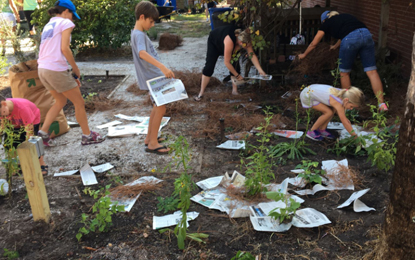Pacific Northwest Project Resources:

The Pacific Northwest region includes Oregon, Washington, and Idaho. With more than 4,430 miles of shoreline, over 19 national forests, and the vast Cascade Mountain Range, this region has diverse topography, abundant natural resources, and varying climates.
The land west of the Cascade Mountains has mild year-round temperatures, wet winters, and dry summers. East of the mountains, it is typically sunnier and drier throughout the year, with colder and much hotter summers.
The Pacific Northwest is one of the most ecologically intact regions in the contiguous United States. Once dominated by the timber industry, the region has shifted away from logging. More than 15 mills have closed in the past decade.
Aquatic invasive species can harm local water supplies, damage native ecosystems, impact outdoor recreation activities, and threaten our health and safety. They cost the U.S. billions of dollars annually to manage and can cause long-term economic and environmental harm.


St. Simons Elementary School Native Garden, GA
Common invasive plants in the Pacific Northwest
Some of the most common invasive plants on the Pacific Northwest coast are the knotweed, Spartina, hogweed, Hydrilla and Eurasian watermilfoil, saltcedar or Tamarix spp., Scotch broom, gorse, Himalayan and cutleaf blackberry, English holly, English ivy, butterfly bush, knotweed, thistles, purple loosestrife, common reed (Phragmites australis), Brazilian pepper, purple loosestrife, and Japanese stilt grass.
Invasive species and noxious weed classifications are very regionally specific. Sometimes, a plant classified as invasive in one area may not be invasive in another. Check the local noxious weed lists for species considered invasive and what level of control is required. Treatment/removal is unique to the plant species. Some species are easy to remove with hand pulling. Some species infestations are made worse by hand-pulling and must be controlled with pesticides in accordance with a permit. Consultation with local invasive species authorities is necessary when working with invasive species.


The best way for you to help prevent the spread of invasive plant species is to stop new outbreaks before they start. Each of us has a role in keeping our waterways clean and healthy for future generations. For example, the best way that you can help to prevent the spread of aquatic invasive species is to always clean your boat after use.
Early detection can help avoid many of the environmental and economic losses caused by invasive species. Reporting invasive species to the experts could stop the next invasion.
Report invasive species through the national Early Detection and Distribution Mapping System (EDDMapS).
Additionally, many states have invasive species reporting hotlines, online forms, or mobile apps. Using your internet browser, search with the terms “invasive species reporting [enter your state or county]” to discover how best to report in your area.

While invasive species pose major challenges, a number of management options exist. Prevention is important, but that is beyond the scope of this website. Physical or mechanical control, chemical control, cultural management, and biological control are all useful tools.
Removing invasive species and restoring native species brings myriad benefits. Restoration of wetlands, dunes, and other coastal areas protects against erosion, reduces flooding, and improves water quality. Native birds, fish, and other wildlife return to restored areas, enhancing fisheries and biodiversity. Habitat improvement helps the recovery of threatened or endangered species. Tourism and outdoor recreation benefit as people fish, bird watch, or visit wildlife areas.
What can you expect if you want to remove invasive species?
Invasive species removal can be a rewarding activity for any group of concerned citizens. Many species can be removed by hand, with little training. It is best to consult a local expert to understand the likely long-term outcomes of your effort. Some plant species can only be substantially reduced using fire, changing land elevation, or applying herbicides across large areas, in accordance with permits. One important role for local residents is participating in identification efforts to stop the spread of these species before they firmly take hold.

Pacific Southwest Community partners helping to build a reef barrier.

Community volunteers as part of a restoration project.
We need your help to improve the Toolkit by completing our easy, 3-minute survey. Your insight is valuable to us.